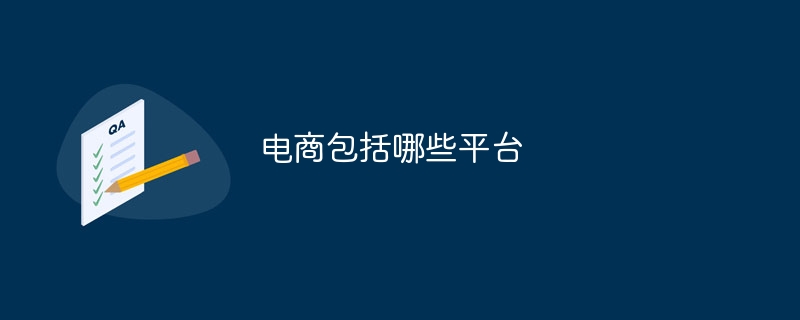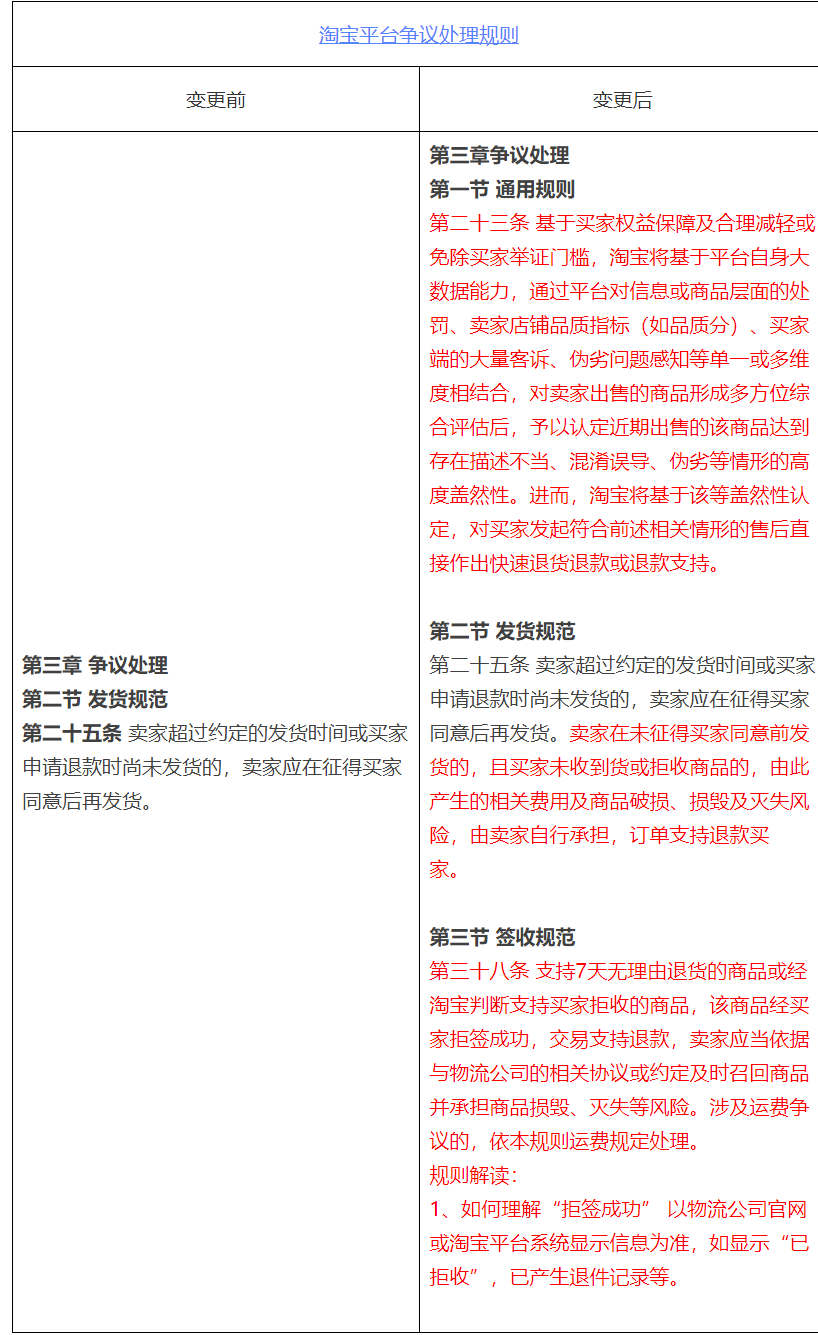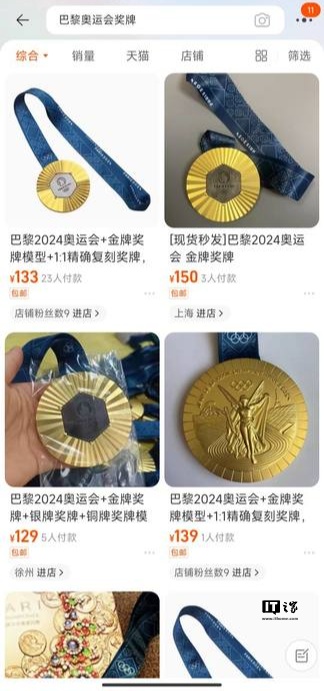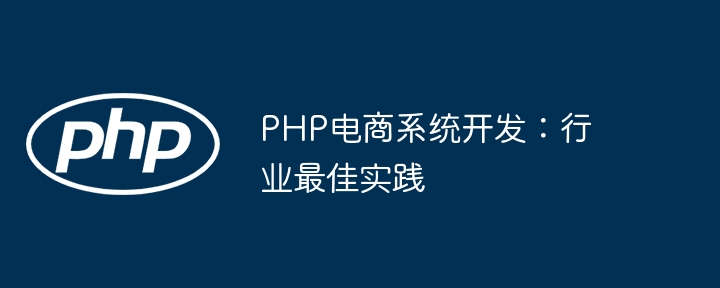 Backend Development
Backend Development PHP Tutorial
PHP Tutorial PHP e-commerce system development: performance optimization strategies
PHP e-commerce system development: performance optimization strategiesOptimization strategy: Database optimization: use indexes to speed up queries. Cache query result sets. Use persistent connections. Code optimization: avoid N+1 queries. Use lazy loading optimization algorithms. Front-end optimization: shrink and compress files. Cache static resources. Optimize image size and quality.

PHP e-commerce system development: performance optimization strategy
Optimizing e-commerce system performance is crucial to improving website speed and user experience important. This article will introduce some key optimization strategies for PHP e-commerce systems.
1. Database optimization
- Use indexes: Appropriate use of indexes can significantly speed up database queries. Add indexes based on frequently queried fields.
- Cache queries: Cache frequently executed query result sets to avoid repeated execution of expensive database operations.
- Use persistent connections: Establishing a persistent database connection instead of establishing a new connection for each query can improve performance.
Code Optimization
- Avoid N+1 queries: use a single query to get all the necessary data at once instead of executing it for each entity Multiple queries.
- Use lazy loading: only load data when needed to reduce page loading time.
- Optimize algorithms: Review code and optimize resource-intensive algorithms to improve efficiency.
Front-End Optimization
- Minify and Compress: Minify JS and CSS files to reduce file size and increase loading speed.
- Cache static resources: cache images, CSS and script files to avoid repeated downloads.
- Optimize images: Compress and resize images to reduce page size.
Practical case:
Cache query result set:
<?php
// 缓存结果集
$cacheKey = 'products_by_category_' . $categoryId;
$cachedResults = cache()->get($cacheKey);
// 如果缓存未命中,运行查询
if (!$cachedResults) {
$cachedResults = $productRepository->findByCategory($categoryId);
cache()->set($cacheKey, $cachedResults, 600); // 缓存 10 分钟
}
// 返回缓存结果
return $cachedResults;
?>Optimize images:
function optimizeImage($imagePath)
{
// 压缩图像以减少文件大小
$newImage = imagecreatefromjpeg($imagePath);
imagejpeg($newImage, $imagePath, 85);
// 调整图像大小以适合缩略图
$thumbWidth = 200;
$thumbHeight = 200;
$newThumbImage = imagecreatetruecolor($thumbWidth, $thumbHeight);
imagecopyresampled($newThumbImage, $newImage, 0, 0, 0, 0, $thumbWidth, $thumbHeight, imagesx($newImage), imagesy($newImage));
imagedestroy($newImage);
return $newThumbImage;
}By implementing these strategies, you can significantly improve the performance of your PHP e-commerce system, thereby improving user experience and increasing conversion rates.
The above is the detailed content of PHP e-commerce system development: performance optimization strategies. For more information, please follow other related articles on the PHP Chinese website!
 电商包括哪些平台Aug 24, 2023 am 11:05 AM
电商包括哪些平台Aug 24, 2023 am 11:05 AM电商平台有亚马逊、阿里巴巴、京东、eBay、Walmart等。详细介绍:1、亚马逊,全球最大的电商平台之一,提供了各种商品的在线购买服务,拥有自己的物流系统,能够快速配送商品;2、阿里巴巴,中国最大的电商平台,旗下拥有淘宝、天猫等知名品牌,为消费者提供了丰富的商品选择;3、京东,中国第二大电商平台,也是一家综合性的电商企业;4、eBay、Walmart等国际知名的电商平台等等。
 php怎么设置implode没有分隔符Apr 18, 2022 pm 05:39 PM
php怎么设置implode没有分隔符Apr 18, 2022 pm 05:39 PM在PHP中,可以利用implode()函数的第一个参数来设置没有分隔符,该函数的第一个参数用于规定数组元素之间放置的内容,默认是空字符串,也可将第一个参数设置为空,语法为“implode(数组)”或者“implode("",数组)”。
 手把手教你uniapp和小程序分包(图文)Jul 22, 2022 pm 04:55 PM
手把手教你uniapp和小程序分包(图文)Jul 22, 2022 pm 04:55 PM本篇文章给大家带来了关于uniapp跨域的相关知识,其中介绍了uniapp和小程序分包的相关问题,每个使用分包小程序必定含有一个主包。所谓的主包,即放置默认启动页面/TabBar 页面,以及一些所有分包都需用到公共资源/JS 脚本;而分包则是根据开发者的配置进行划分,希望对大家有帮助。
 淘宝平台改动争议处理规则,促进迅速退货退款Dec 31, 2023 pm 08:56 PM
淘宝平台改动争议处理规则,促进迅速退货退款Dec 31, 2023 pm 08:56 PM本站12月26日消息,淘宝发布公示,拟变更淘宝平台争议处理规则的相关规则,今日起正式生效。从新规上看,如果卖家差评或者违规情况过多,可能在收到投诉后直接被判定退货退款或退款。核心变更点淘宝新增了基于平台自身大数据能力的功能,可以识别多个方面的信息,并根据买家发起的符合相关情况的售后要求,制定快速退款或退货退款的规则依据为了解决卖家延迟发货、强制发货且未经买家同意的问题,我们需要补充钱款处理方向的规则依据新增对于支持7天无理由退货或经平台判定可支持买家拒收的商品,针对买家成功拒签的情况,支持退款处
 巴黎奥运会奖牌仿制品在电商平台热销,律师称存侵权风险Aug 12, 2024 pm 01:30 PM
巴黎奥运会奖牌仿制品在电商平台热销,律师称存侵权风险Aug 12, 2024 pm 01:30 PM本站8月12日消息,巴黎奥运会已经闭幕,据第一财经报道,多个电商平台上出现了大量“奥运奖牌”仿制品。这些仿制品在拼多多、淘宝、京东和抖音等平台上均有售卖,外观与巴黎奥运会运动员所获奖牌几乎无异,售价从111元至402元不等。淘宝上,“一款‘奥运奖牌’”在一周内被超过100人购买,超过1000人加入购物车。拼多多上,一款“奥运奖牌”售价117.99元,已售出231件。京东上的商品直接标注为“2024年巴黎奥运运动会奖牌模型收藏1:1复刻纪念品”。抖音上的商家大多避开了“巴黎奥运会”的字样,强调其为
 如何使用Vue实现电商商品分类特效Sep 19, 2023 am 11:54 AM
如何使用Vue实现电商商品分类特效Sep 19, 2023 am 11:54 AM如何使用Vue实现电商商品分类特效在电商网站中,商品分类是一个非常重要的功能,它可以帮助用户快速找到自己感兴趣的商品。而使用Vue框架实现商品分类特效可以使用户在浏览商品时具有良好的用户体验。本文将介绍如何使用Vue实现电商商品分类特效,并给出详细的代码示例。首先,我们需要创建一个Vue实例,并在模板中定义商品分类的结构。假设我们的商品分类有三个级别,分别为
 PHP电商系统开发:行业最佳实践Jun 01, 2024 pm 07:06 PM
PHP电商系统开发:行业最佳实践Jun 01, 2024 pm 07:06 PMPHP电商系统开发最佳实践包括:模块化和可扩展性:易于维护和扩展以适应业务变化。可伸缩性:处理高流量和大量事务。安全性:采取措施保护用户数据和交易,例如SSL证书和数据加密。数据库设计:使用关系型数据库(RDBMS),规范化数据并选择适当的数据类型。代码架构:采用MVC设计模式、遵循PSR标准并使用命名空间。实战案例:使用Laravel框架创建电商系统,涉及项目创建、数据库设置、路由配置、模型和控制器编写以及视图创建。
 真实面经分享:电商运营笔试专业题目总结Jan 30, 2023 pm 04:03 PM
真实面经分享:电商运营笔试专业题目总结Jan 30, 2023 pm 04:03 PM本篇文章给大家分享一下我之前参加某科技独角兽公司的电商运营岗位的笔试题,下面一起来看一下吧,希望对有需要的朋友有所帮助啊~


Hot AI Tools

Undresser.AI Undress
AI-powered app for creating realistic nude photos

AI Clothes Remover
Online AI tool for removing clothes from photos.

Undress AI Tool
Undress images for free

Clothoff.io
AI clothes remover

AI Hentai Generator
Generate AI Hentai for free.

Hot Article

Hot Tools

SAP NetWeaver Server Adapter for Eclipse
Integrate Eclipse with SAP NetWeaver application server.

SublimeText3 Linux new version
SublimeText3 Linux latest version

SublimeText3 Mac version
God-level code editing software (SublimeText3)

Zend Studio 13.0.1
Powerful PHP integrated development environment

SublimeText3 Chinese version
Chinese version, very easy to use





